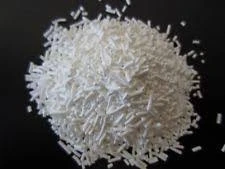
Trends and Factors Influencing Zinc Fertilizer Prices in Today's Market
Understanding Zinc Fertilizer Prices and Their Impact on Agriculture
Zinc is an essential micronutrient required for the growth and development of plants. Its role in various physiological processes, including enzyme activity and photosynthesis, makes it crucial for crop yields and overall agricultural productivity. As the global population continues to grow, the demand for efficient agricultural practices increases, which in turn raises the need for nutrient-rich fertilizers, including those containing zinc.
In recent years, the prices of zinc fertilizers have become a significant concern for farmers, agronomists, and policymakers alike. Fluctuations in zinc fertilizer prices can greatly affect farming costs and ultimately influence food production and supply. Understanding the factors that contribute to these price changes is vital for stakeholders in the agricultural sector.
Factors Influencing Zinc Fertilizer Prices
1. Global Zinc Market Dynamics The price of zinc fertilizers is closely tied to the global market for zinc. As a commodity, zinc's price can fluctuate due to mining outputs, geopolitical events, and changes in demand across various industries, particularly construction and manufacturing. When zinc prices increase, the cost of zinc fertilizers typically follows, impacting farmers’ budgets.
2. Manufacturing and Transportation Costs The process of producing zinc fertilizers involves mining, refining, and manufacturing, all of which require substantial energy and resources. Rising energy costs, fuel prices, and transportation expenses can lead to increased production costs for zinc fertilizers. These higher costs are often passed on to consumers, contributing to an overall rise in fertilizer prices.
3. Agricultural Demand Seasonal demands for fertilizers can also influence pricing. For example, during planting seasons, the demand may spike, leading to temporary price increases. Additionally, regions experiencing soil deficiencies in zinc may see higher prices due to increased local demand.
4. Environmental Regulations Stricter environmental regulations regarding fertilizer production and usage can lead to increased costs for manufacturers. These costs are then reflected in the final price of zinc fertilizers. Compliance with sustainability practices and the adoption of eco-friendly production methods can be more expensive but necessary for long-term viability.
5. Market Competition and Availability The availability of zinc fertilizers in the market and the degree of competition among suppliers also play significant roles in determining prices. In regions where fewer suppliers operate, prices may be higher due to a lack of competition. Conversely, markets with multiple suppliers may see more competitive pricing.
The Impact of Zinc Fertilizer Price Fluctuations
zinc fertilizer price

The volatility of zinc fertilizer prices can have profound implications for farmers, particularly smallholders who may be operating on tight margins. Increased costs can lead to reduced profit margins and, in some cases, the inability to afford necessary inputs, adversely affecting crop yields. This, in turn, can lead to food insecurity and economic challenges in agricultural communities.
Moreover, fluctuations in zinc fertilizer prices can also influence farmers' choices regarding crop types and planting decisions
. Farmers may opt for less nutrient-intensive crops or delay the application of fertilizers, potentially leading to lower agricultural productivity and sustainability.Strategies for Mitigating Price Fluctuations
To cope with the challenges posed by fluctuating zinc fertilizer prices, several strategies can be considered
1. Diversification of Nutrient Sources Utilizing a blend of fertilizers or exploring alternative micronutrient sources can help reduce reliance on zinc fertilizers alone, mitigating the impact of price increases.
2. Buying Groups Farmers may consider forming cooperative buying groups to purchase fertilizers collectively, potentially securing better prices through bulk purchasing.
3. Soil Testing and Precision Agriculture Implementing soil testing and precision agriculture practices allows farmers to apply the right amount of zinc and other fertilizers as needed, improving efficiency and reducing waste.
4. Research and Development Investing in research to develop zinc-efficient crop varieties can lead to better yield outcomes with lower fertilizer input, making it easier for farmers to cope with fluctuating prices.
Conclusion
Zinc fertilizer prices are influenced by a myriad of factors ranging from global supply and demand dynamics to local agricultural practices. As the agricultural sector faces increasing challenges in feeding a growing population, understanding these price dynamics is essential. By adopting strategic practices and fostering innovation, farmers can better navigate the complexities of fertilizer price fluctuations, ensuring sustainable food production and economic resilience in their communities.
-
Buy High-Quality Trichloroisocyanuric Acid for Sale | TCCA 90% SupplierNewsAug.30,2025
-
Pure Sodium Dichloroisocyanurate Dihydrate | Powerful DisinfectantNewsAug.29,2025
-
Industrial Chemicals: Quality & Purity for Every IndustryNewsAug.28,2025
-
Nitrile Rubber Honoring Strict Production StandardsNewsAug.22,2025
-
Aspartame Ingredients Honoring Food Safety ValuesNewsAug.22,2025
-
Fertilizer for Balanced Plant NutritionNewsAug.22,2025
-
Cyanide Gold Processing with High Purity AdditivesNewsAug.22,2025
Hebei Tenger Chemical Technology Co., Ltd. focuses on the chemical industry and is committed to the export service of chemical raw materials.
-

view more DiethanolisopropanolamineIn the ever-growing field of chemical solutions, diethanolisopropanolamine (DEIPA) stands out as a versatile and important compound. Due to its unique chemical structure and properties, DEIPA is of interest to various industries including construction, personal care, and agriculture. -

view more TriisopropanolamineTriisopropanolamine (TIPA) alkanol amine substance, is a kind of alcohol amine compound with amino and alcohol hydroxyl, and because of its molecules contains both amino and hydroxyl. -

view more Tetramethyl Thiuram DisulfideTetramethyl thiuram disulfide, also known as TMTD, is a white to light-yellow powder with a distinct sulfur-like odor. It is soluble in organic solvents such as benzene, acetone, and ethyl acetate, making it highly versatile for use in different formulations. TMTD is known for its excellent vulcanization acceleration properties, which makes it a key ingredient in the production of rubber products. Additionally, it acts as an effective fungicide and bactericide, making it valuable in agricultural applications. Its high purity and stability ensure consistent performance, making it a preferred choice for manufacturers across various industries.





